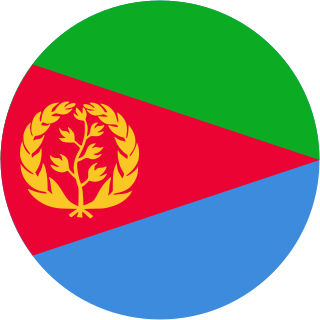This article is being considered for deletion in accordance with Wikipedia's deletion policy. Please share your thoughts on the matter at this article's entry on the Articles for deletion page. |
This biography of a living person needs additional citations for verification .(March 2018) (Learn how and when to remove this template message) |
Tom Cooper (born 1970) is an Austrian author, journalist, historian and illustrator with an interest in modern military aviation. [1] [2]

Austria, officially the Republic of Austria, is a country in Central Europe comprising nine federated states. Its capital, largest city and one of nine states is Vienna. Austria has an area of 83,879 km2 (32,386 sq mi), a population of nearly nine million people and a nominal GDP of $477 billion. It is bordered by the Czech Republic and Germany to the north, Hungary and Slovakia to the east, Slovenia and Italy to the south, and Switzerland and Liechtenstein to the west. The terrain is landlocked and highly mountainous, lying within the Alps; only 32% of the country is below 500 m (1,640 ft), and its highest point is 3,798 m (12,461 ft). The majority of the population speaks local Bavarian dialects as their native language, and German in its standard form is the country's official language. Other regional languages are Hungarian, Burgenland Croatian, and Slovene.

Aviation, or air transport, refers to the activities surrounding mechanical flight and the aircraft industry. Aircraft includes fixed-wing and rotary-wing types, morphable wings, wing-less lifting bodies, as well as lighter-than-air craft such as balloons and airships.
Contents
Following a career in worldwide transportation business, in which he travelled extensively in Europe and the Middle East and established contacts, he moved into writing. Cooper narrowed his earlier fascination with post–Second World War military aviation to focus on smaller air forces and conflicts, about which he has collected extensive archives of material. Concentrating on air warfare that has previously received scant attention, he specializes in investigative research on little-known African and Arab air forces, as well as the Iranian air force. His first works were published in the 1990s on the ACIG website (Air Combat Information Group; former ACIG.org, since 2013: ACIG.info).
Cooper has authored and co-authored 40 books, the first of which offered exclusive insights into the operational history of the Iranian and Iraqi air forces during the Iran–Iraq War (fought 1980–1988).

The Iran–Iraq War began on 22 September 1980, when Iraq invaded Iran, and it ended on 20 August 1988, when Iran accepted the UN-brokered ceasefire. Iraq wanted to replace Iran as the dominant Persian Gulf state, and was worried that the 1979 Iranian Revolution would lead Iraq's Shi'ite majority to rebel against the Ba'athist government. The war also followed a long history of border disputes, and Iraq planned to annex the oil-rich Khuzestan Province and the east bank of the Arvand Rud.
His major early works were two series: 'African MiGs' (two volumes), and 'Arab MiGs' (six volumes). The former examined the development and service history of 23 air forces in Sub-Saharan Africa; the latter the operational history of major Arab air forces at wars with Israel in period 1955–1973.
Since 2017, Cooper is working as editor of the five @War book series published by Helion & Co. (Africa@War, Asia@War, Europe@War, Latin America@War and Middle East@War), to which he is also contributing as author and illustrator.
Except for books, Cooper has published more than 1,000 articles in specialized press and online, including magazines like Air & Space Smithsonian, AirEnthusiast, Air Force Magazine, AirForces Monthly, Air Combat, AirPower, Combat Aircraft, Le Fana de l'Aviation, Fliegerrevue & Fliegerrevue Extra, Flight Journal, International Air Power Review, Iranian Aviation Review, Jane's Defence Weekly, Modern War, SDI, Truppendienst, WarIsBoring.com, and World Air Power Journal.










